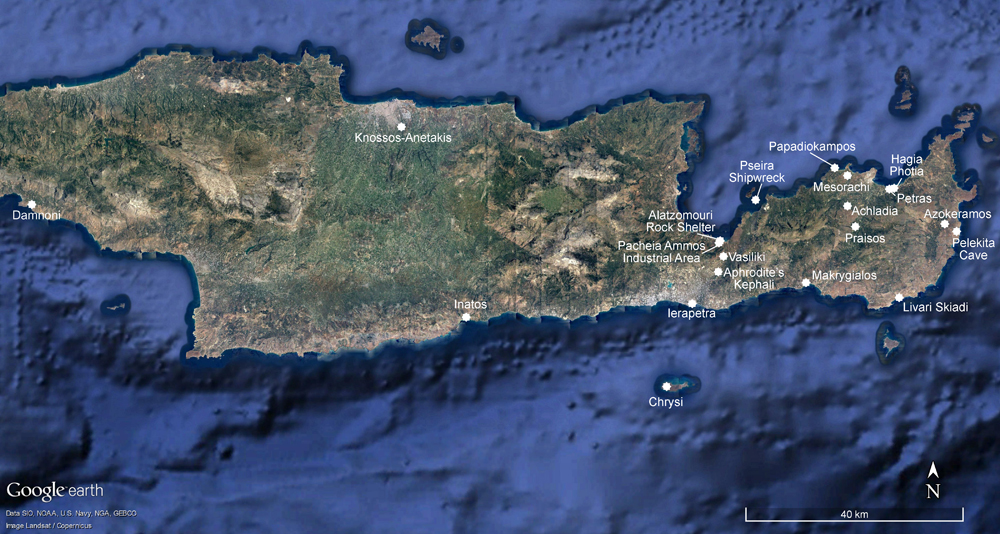To extend the services of the Study Center to the wider community working on Crete, the Greek mainland and islands, Cyprus, and Turkey, INSTAP created the Publication Team, which offers technical support for illustration, photography, conservation, petrography, and geophysical and faunal analysis. The members include both full-time and part-time specialists who work at the Study Center or travel to work on material in museums and storerooms in the wider Aegean region. More information about the services is provided under Conservation and Heritage Management, Illustration and Photography, and Archaeological Science, including application procedures. In 2017 more than 50 projects based in the Aegean enjoyed Publication Team support.
In the same spirit the INSTAP Study Center also accepts visiting projects that are based on Crete and wish to take advantage of the various equipment and technical support (e.g., conservation and illustration) that is available in Pacheia Ammos. As a testament to the success of this mission, the number of visiting projects now exceeds the number of projects permanently based at the facility by a factor of two.
Selection of the Visiting Projects
Achladia
Mantzourani, E., and G. Vavouranakis. 2005. “Achladia and Epano Zakros: A Re-examination of the Architecture and Topography of Two Possible Minoan Villas in East Crete,” OpAth 30, pp. 99–125.
Aphrodite’s Kephali
Betancourt, P.P. 2013. Aphrodite’s Kephali. An Early Minoan I Defensive Site in Eastern Crete (Prehistory Monographs 41), Philadelphia.
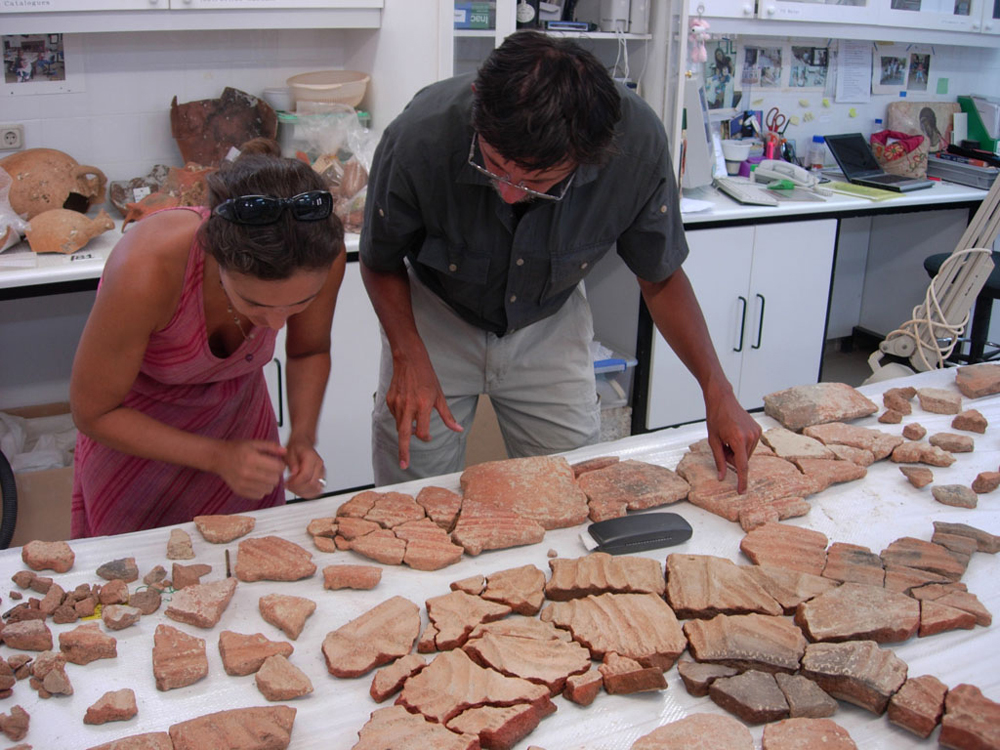
Azokeramos
Mantzourani, E., and G. Vavouranakis. 2011. “Συγκριτική Μελέτη της Αρχιτεκτονικής των Μινωικών Οικιών στις Θέσεις Ρουσσές Χόνδρου και Αζοκέραμος Ζάκρου,” in Πεπραγμένα του Ι΄ Διεθνούς Κρητολογικού Συνεδρίου Α’(2), Chania, pp. 415–428.
Bramiana
Betancourt, P.P., S.C. Ferrence, V. Apostolakou, T.M. Brogan, E. Nodarou, and F.S.C. Hsu. 2016. “Origins of the Mycenaean Lustrous Dark-on-Light Pottery Technology,” in RA-PI-NE-U. Studies on the Mycenaean World offered to Robert Laffineur for his 70th Birthday (Aegis 10), J. Driessen, ed., Louvain, pp. 63–68.
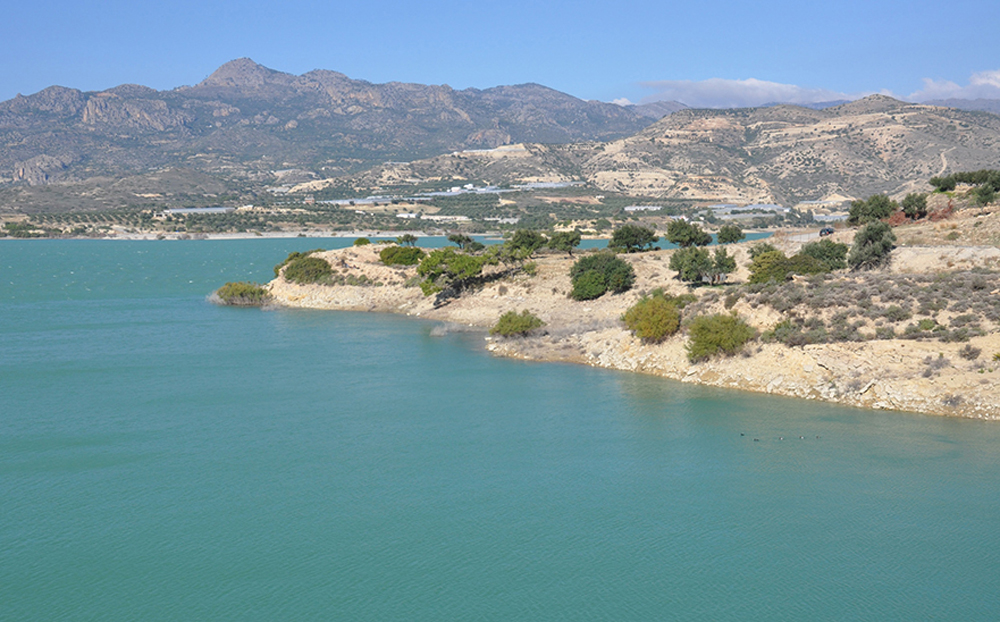
Chryssi
Apostolakou, S., P. Betancourt, T. Brogan, and D. Mylona. 2016. “Chryssi and Pefka: The Production and Use of Purple Dye on Crete in the Middle and Late Bronze Age,” in Purpureae Vestes V: Textiles, Basketry and Dyes in the Ancient Mediterranean World. Proceedings of the Vth International Symposium on Textiles and Dyes in the Ancient Mediterranean World (Montserrat, 19-22 March, 2014), J. Ortiz, C. Alfaro, L. Turell, and M.a J. Martinez, eds., Valencia, pp. 199–208.
Apostolakou, V., T.M. Brogan, and P.P. Betancourt. 2012. “The Minoan Settlement on Chryssi and its Murex Dye Industry,” in Kosmos. Jewellery, Adornment and Textiles in the Aegean Bronze Age. Proceedings of the 13th International Aegean Conference/13e Rencontre égéenne internationale, University of Copenhagen, Danish National Research Foundation’s Centre for Textile Research, 21-26 April 2010 (Aegaeum 33), M.-L. Nosch and R. Laffineur, eds., Liège, pp. 179–182.

Gaidourofas
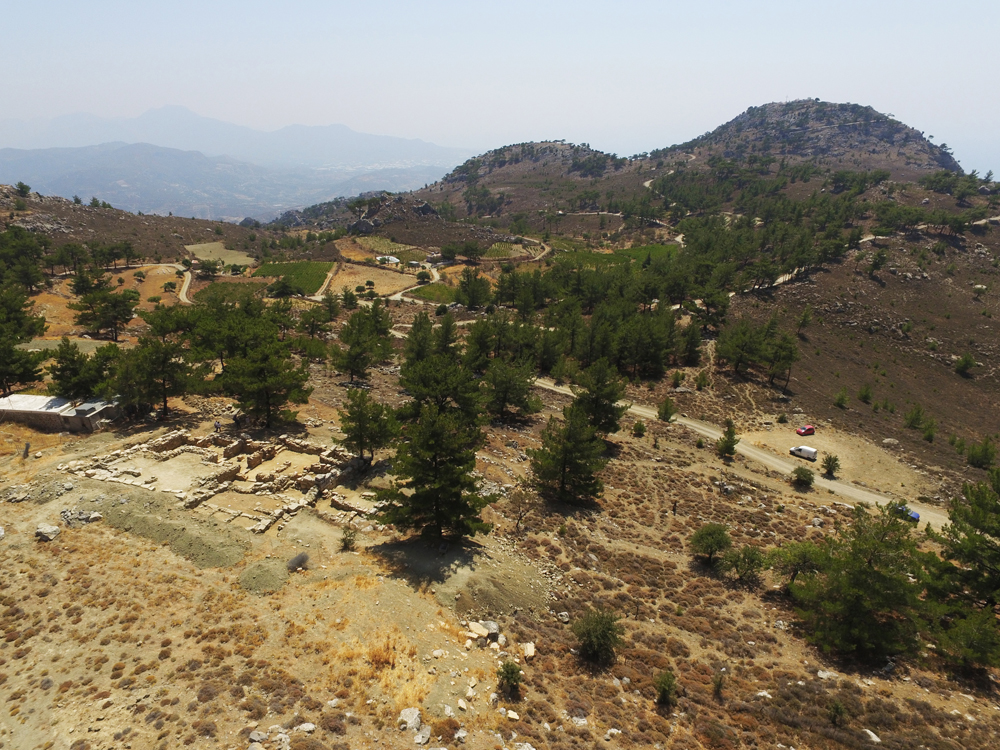
Hagia Photia
Davaras, C., and P.P. Betancourt. 2004. The Hagia Photia Cemetery I. The Tomb Groups and Architecture (Prehistory Monographs 14), Philadelphia.
Davaras, C., and P.P. Betancourt. 2012. The Hagia Photia Cemetery II. The Pottery (Prehistory Monographs 34), Philadelphia.
Ierapetra
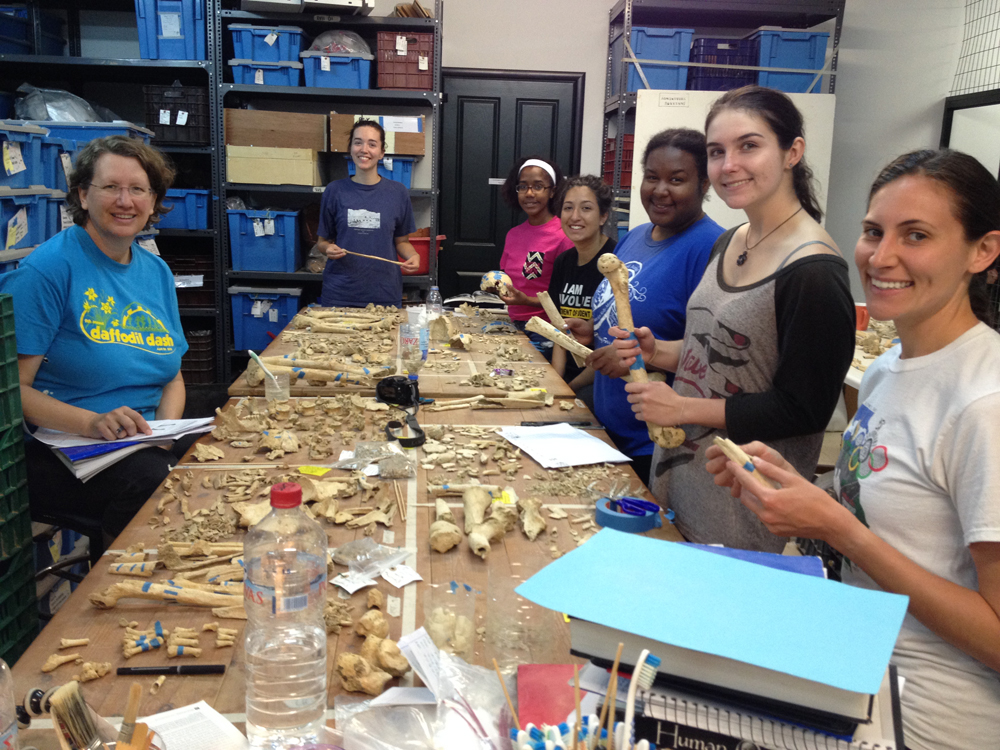
Inatos Cave

Karfi
Wallace, S. 2012. “Surviving Crisis: Insights from New Excavation at Karphi, 2008,” BSA 107, pp. 1–85.
Livari
Papadatos, Y., and Ch. Sofianou. 2015. Livari Skiadi. A Minoan Cemetery in Southeast Crete. I. Excavation and Finds (Prehistory Monographs 50), Philadelphia.
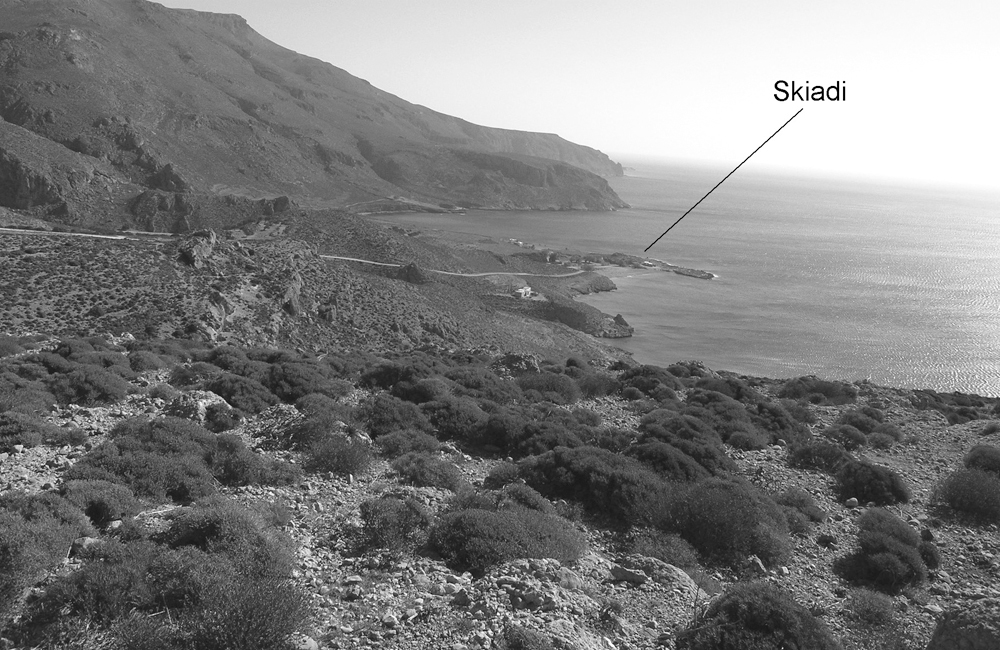
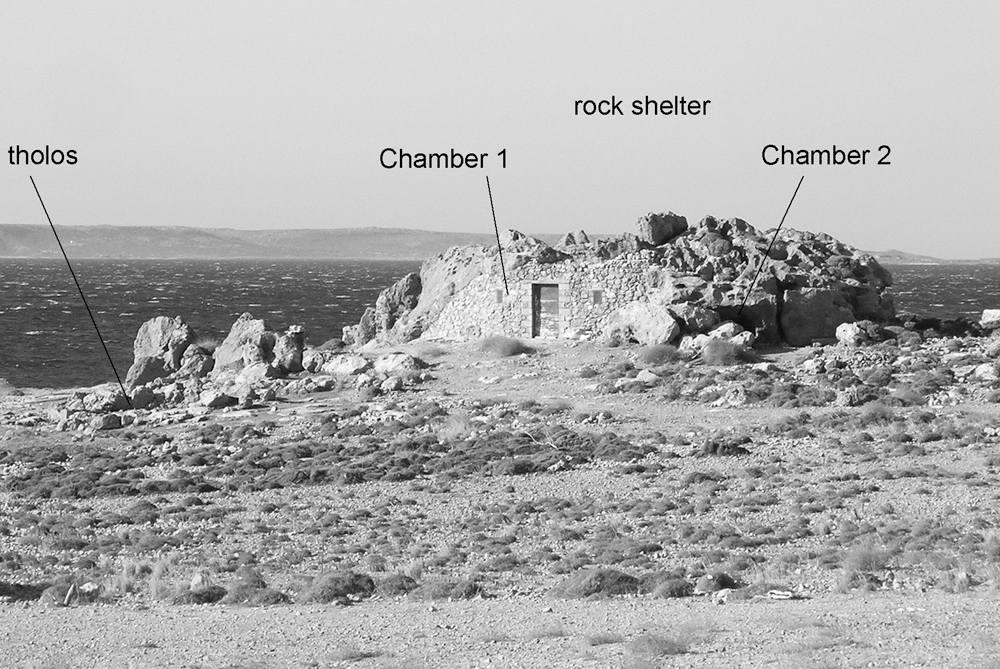
Makrygialos
Mantzourani, E. 2007. “Makrygialos Reloaded: The LM IB Pottery: A Response to Dario Puglisi,” in LM IB Pottery. Relative Chronology and Regional Differences. Acts of a Workshop Held at the Danish Institute at Athens in Collaboration with the INSTAP Study Center for East Crete, 27–29 June 2007 (Monographs of the Danish Institute at Athens 11,1), T.M Brogan and E. Hallager, eds., Athens, pp. 291–303.
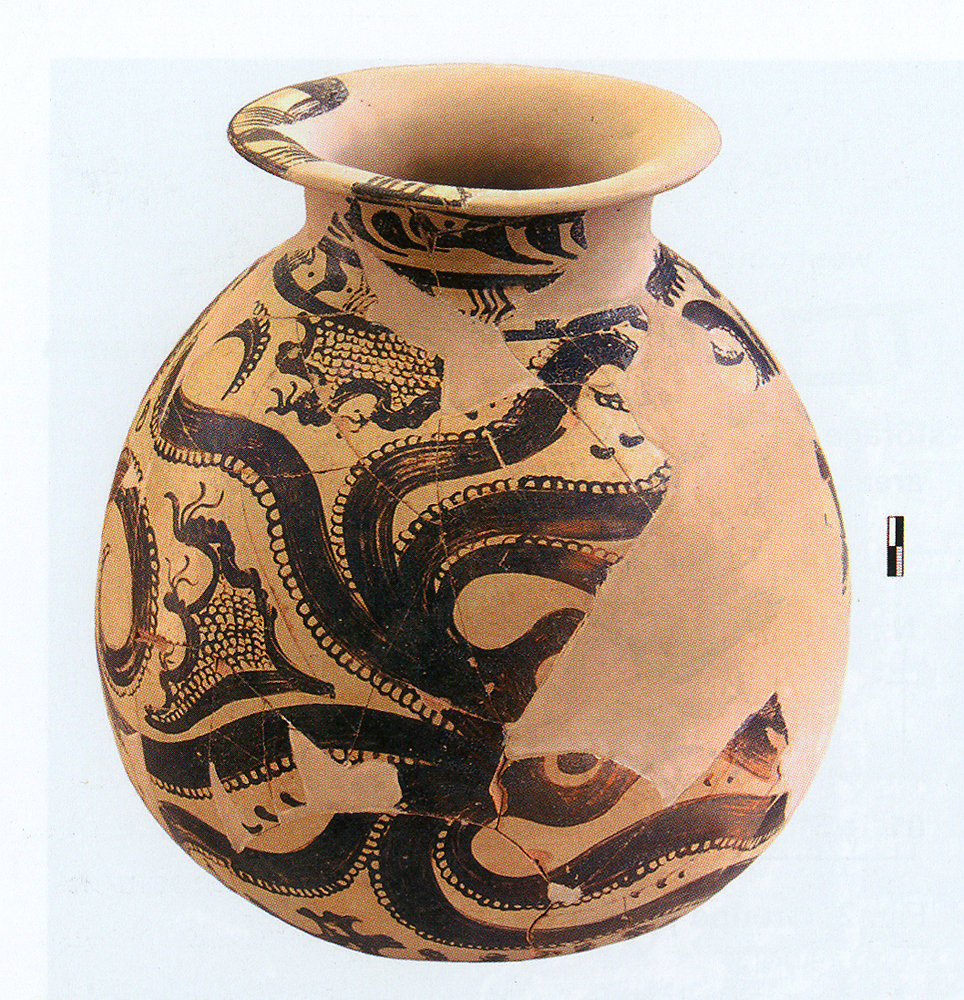
Meseleroi
Vogeikoff-Brogan, N., and S. Kirkpatrick Smith. 2009–2010. “A Male Spinner? A Late Geometric–Early Orientalizing Pithos Burial near Meseleroi, Ierapetra,” Aegean Archaeology 10, pp. 87–104.
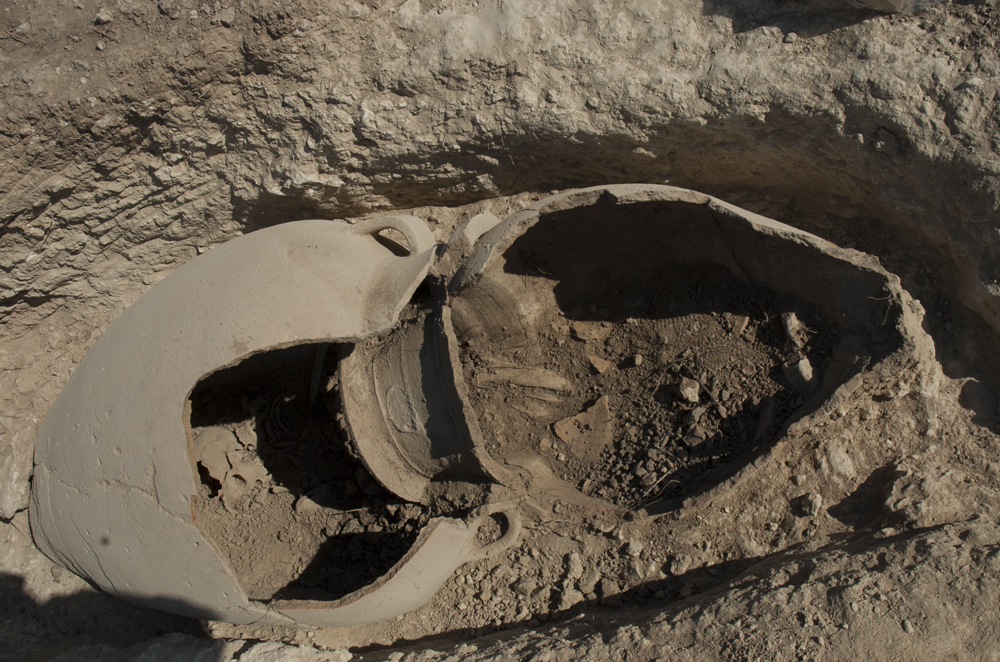
Mesorachi/Sopata
Sofianou, Ch., and T.M. Brogan. Forthcoming. “Ενδοπεριφερειακή Κινητικότητα κατά την Εποχή του Χαλκού. Από τη Μεσοράχη στον Παπαδιόκαμπο της Ανατολικής Κρήτης,” in Πεπραγμένα του ΙΒ΄ Διεθνούς Κρητολογικού Συνεδρίου, Herakleion.
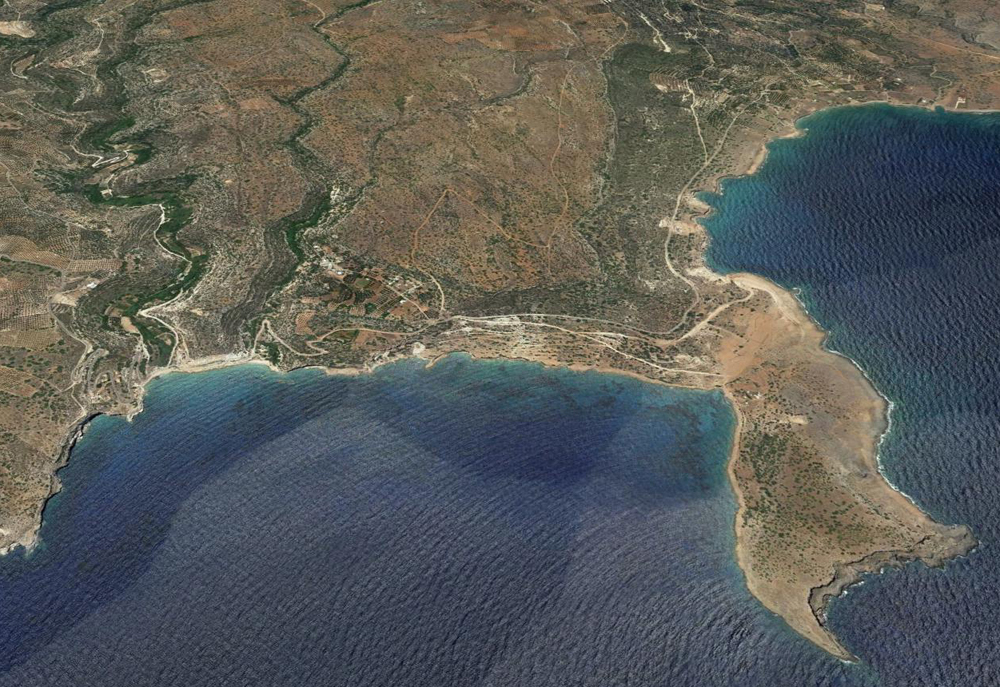
Pacheia Ammos Alatzomouri and Industrial Area
Apostolakou, S., P. Betancourt, T. Brogan, and D. Mylona. 2016. “Chryssi and Pefka: The Production and Use of Purple Dye on Crete in the Middle and Late Bronze Age,” in Purpureae Vestes V: Textiles, Basketry and Dyes in the Ancient Mediterranean World International Symposium on Textiles and Dyes in the Ancient Mediterranean World (Montserrat, 19-22 March, 2014), J. Ortiz, C. Alfaro, L. Turell, and M.a J. Martinez, eds., Valencia, pp. 199–208.
Apostolakou, V., T.M. Brogan, and P.P. Betancourt, eds. 2017. The Alatzomouri Rock Shelter. An Early Minoan III Deposit in Eastern Crete (Prehistory Monographs 58), Philadelphia.
Betancourt, P.P., T. Brogan, V. Apostolakou, and A. Koh. 2014. “The Organization of Minoan Manufacturing,” CretChron 34, pp. 89–96.
Betancourt, P.P., V. Apostolakou, and T.M. Brogan. 2012. “The Workshop for Making Dyes at Pefka, Crete,” in Kosmos. Jewellery, Adornment and Textiles in the Aegean Bronze Age. Proceedings of the 13th International Aegean Conference/13e Rencontre égéenne internationale, University of Copenhagen, Danish National Research Foundation’s Centre for Textile Research, 21-26 April 2010 (Aegaeum 33), M.-L. Nosch and R. Laffineur, eds., Liège, pp. 183–186.
Pareja, M.N., P.P. Betancourt, V. Apostolakou, T.M. Brogan, and A.J. Koh. 2016. “Aegean Dyes. Unearthing the Colors of Ancient Minoan Textiles,” Expedition 58.3, pp. 20–27.

White-on-Dark Ware conical bowl and spouted jar from the Early Minoan III Alatzomouri Rock Shelter.

Papadiokampos
Brogan, T., C. Sofianou, J.E. Morrison, D. Mylona, and E. Margaritis. 2013. “Living off the Fruits of the Sea: New Evidence for Dining at Papadiokampos, Crete,” in Diet, Economy and Society in the Ancient Greek World: Towards a Better Integration of Archaeology and Science. Proceedings of the International Conference held at the Netherlands Institute at Athens on 22-24 March 2010 (Pharos Supplement 1), S. Voutsaki and S.M. Valamoti, eds., Leuven, Paris, Walpole, pp. 123–132.
Brogan, T.M., and Ch. Sofianou. 2009. “Papadiokampos: New Evidence for the Impact of the Theran Eruption on the Northeast Coast of Crete,” in Time’s Up! Dating the Minoan Eruption of Santorini. Acts of the Minoan Eruption Chronology Workshop, Sandbjerg November 2007 (Monographs of the Danish Institute at Athens 10), D.A. Warburton, ed., Athens, pp. 117–124.
Brogan, T.M., Ch. Sofianou, and J.E. Morrison. 2011. “The LM IB Pottery from Papadiokampos: A Response to Leonidas Vokotopoulos,” in LM IB Pottery. Relative Chronology and Regional Differences. Acts of a Workshop Held at the Danish Institute at Athens in Collaboration with the INSTAP Study Center for East Crete, 27–29 June 2007 (Monographs of the Danish Institute at Athens 11,2), T.M. Brogan and E. Hallager, eds., Athens, pp. 573–593.
Morrison, J.E., Ch. Sofianou, T.M. Brogan, J. Alyounis, and D. Mylona. 2015. “Cooking Up New Perspectives for Late Minoan IB Domestic Activities: An Experimental Approach to Understanding the Possibilities and Probabilities of Using Ancient Cooking Pots,” in Ceramics, Cuisine and Culture: The Archaeology and Science of Kitchen Pottery in the Ancient Mediterranean World, M. Spataro and A. Villing, eds., Oxford, Philadelphia, pp. 115–124.
Sofianou, Ch., and T. Brogan. 2007–2008. “Πρώτη προσέγγιση μιας ΥΜ Ι Οικιακής Εγκατάστασης στον Παπαδιόκαμπο Σητείας,” Κρητική Εστία 12, pp. 23–32.
Sofianou, Ch., and T.M. Brogan. 2010. “Μινωικός Οικισμός Παπαδιόκαμπου Σητείας. Η ανασκαφή της Οικίας Β.1 κατά το 2008,” in Αρχαιολογικό Έργο Κρήτης 1. Πρακτικά της 1ης Συνάντησης, Ρέθυμνο, 28-30 Νοεμβρίου 2008, M. Andrianakis and I. Tzachili, eds., Rethymnon, pp. 134–142.
Sofianou, Ch., and T.M. Brogan. 2012. “Papadiokampos and the Siteia Bay in the Second Millennium BC: Exploring Patterns of Regional Hierarchy and Exchange in Eastern Crete,” in Petras, Siteia – 25 Years of Excavations and Studies. Acts of a Two-Day Conference Held at the Danish Institute at Athens, 9–10 October 2010 (Monographs of the Danish Institute at Athens 16), M. Tsipopoulou, ed., Athens, pp. 327–337.
Sofianou, Ch., and T.M. Brogan. 2012. “Ανασκαφές Παπαδιόκαμπου 2009-2010: Η Οικία Β.1,” in Αρχαιολογικό Έργο Κρήτης 2. Πρακτικά της 2ης Συνάντησης. Ρέθυμνο, 26–28 Νοεμβρίου 2010, M. Andrianakis, P. Varthalitou, and I. Tzachili, eds., Rethymnon, pp. 70–80.
Stamos, A., Ch. Sofianou, and T. Brogan. 2015. “Making the Invisible Visible. Ground Penetrating Radar at Papadiokampos, Crete,” in Minoan Archaeology. Perspectives for the 21st Century. Proceedings of the International PhD and Post-Doc Conference at Heidelberg, 23-27 March 2011 (Aegis 08), S. Cappel, U. Günkel-Maschek, and D. Panagiotopoulos, eds., Louvain, pp. 53–60.
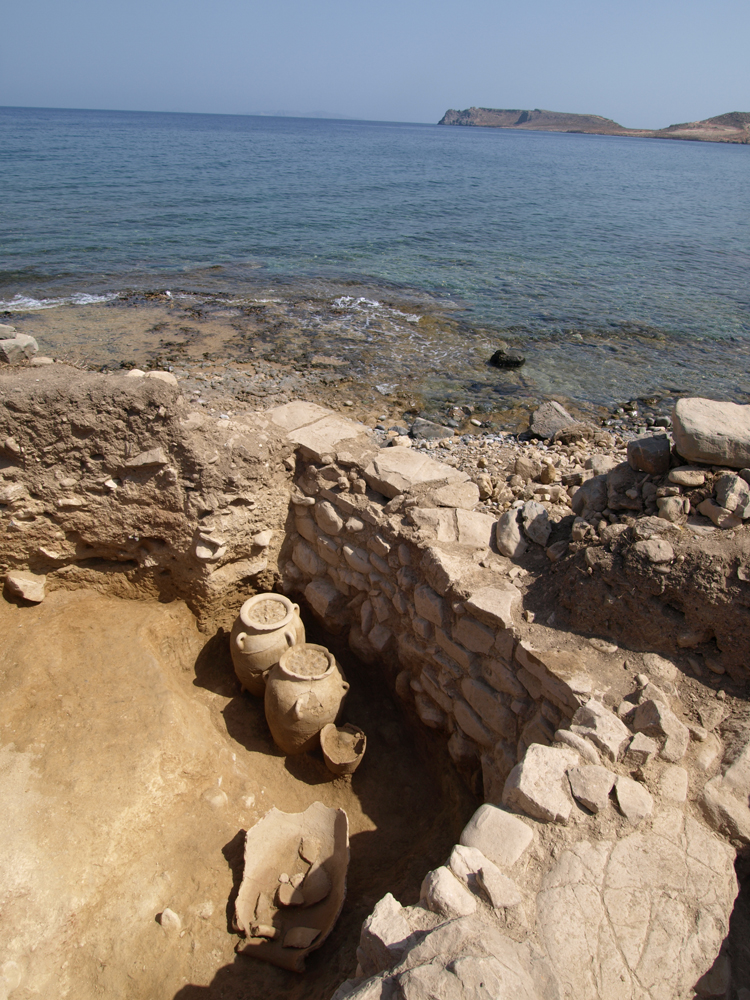
Pelekita
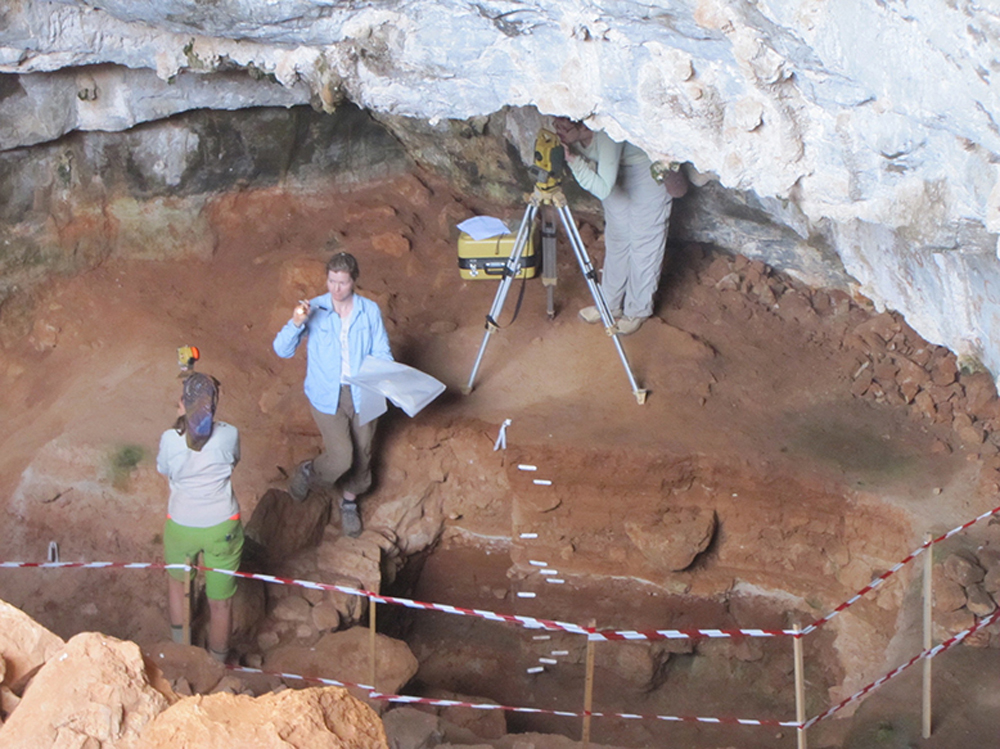
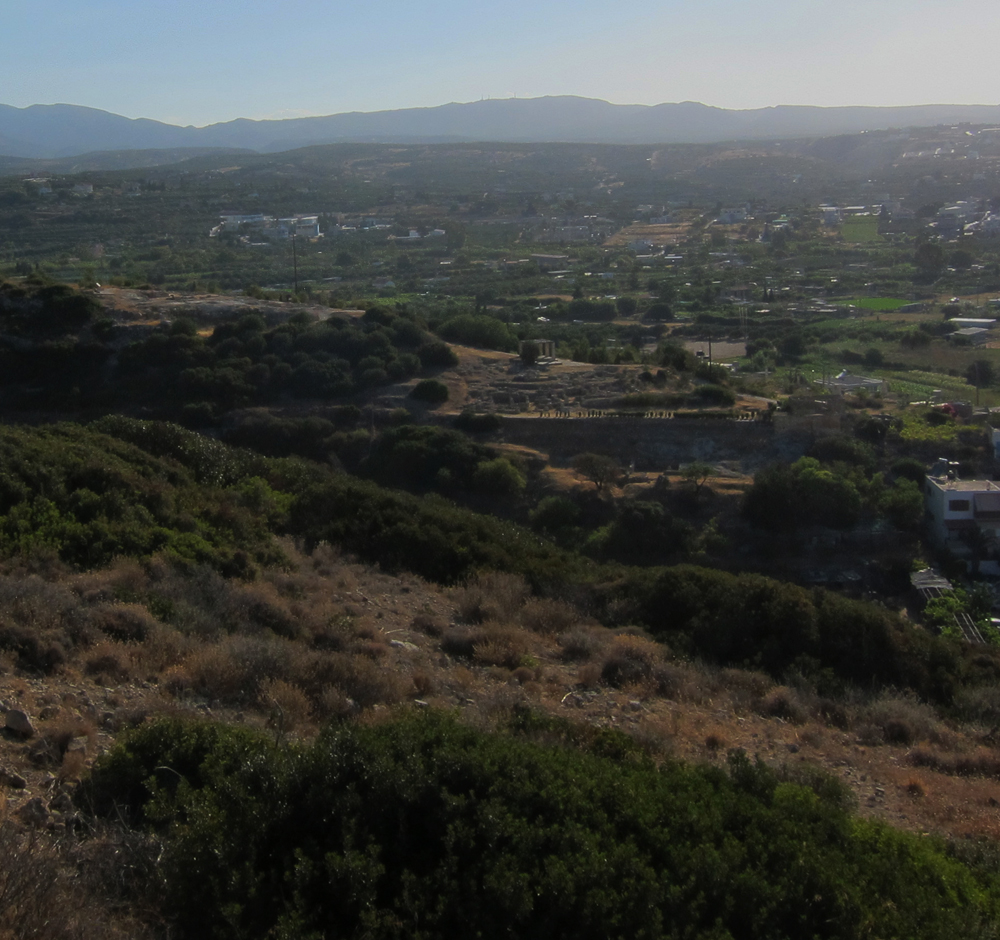
Tsipopoulou, M., and E. Hallager. 2010. The Hieroglyphic Archive at Petras, Siteia (Monographs of the Danish Institute at Athens 9), Athens.
Tsipopoulou, M., ed. 2012. Petras, Siteia—25 Years of Excavations and Studies. Acts of a Two-Day Conference Held at the Danish Institute at Athens, 9–10 October 2010 (Monographs of the Danish Institute at Athens 16), Athens.
Tsipopoulou, M., ed. 2016. Petras, Siteia I: A Minoan Palatial Settlement in Eastern Crete. Excavation of Houses I.1 and I.2 (Prehistory Monographs 53), Philadelphia.
Tsipopoulou, M., ed. 2017. Petras, Siteia: The Pre- and Proto-palatial Cemetery in Context. Acts of a Two-Day Conference Held at the Danish Institute at Athens, 14–15 February 2015 (Monographs of the Danish Institute at Athens 21), Athens.
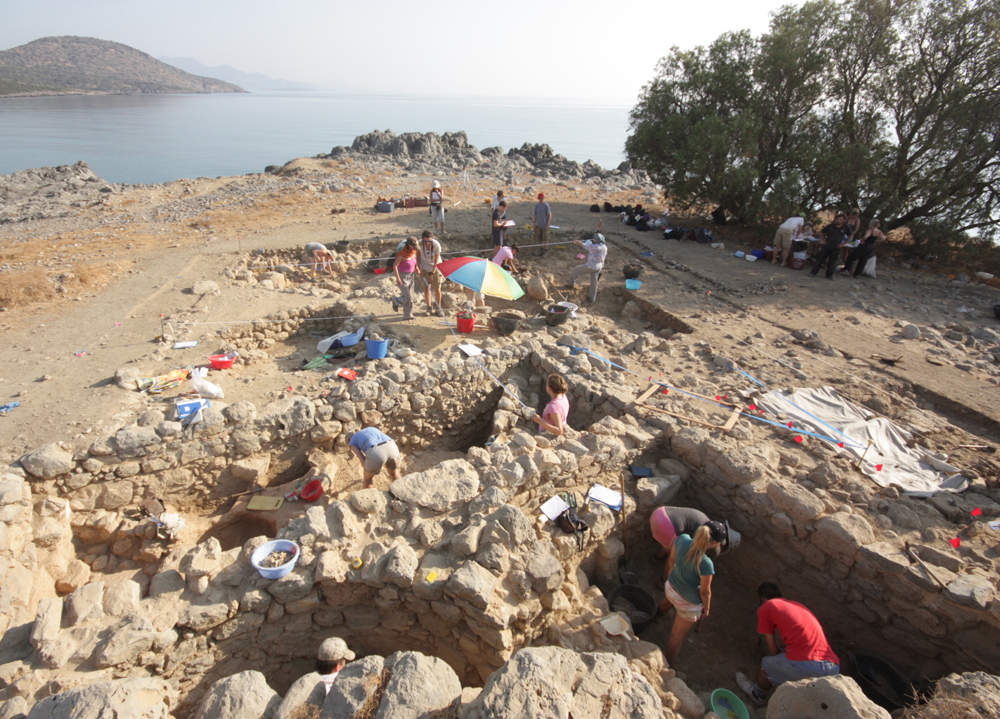
Hayden, B.J., and M. Tsipopoulou. 2012. “The Priniatikos Pyrgos Project: Preliminary Report on the Rescue Excavation of 2005–2006,” Hesperia 81, pp. 507–584.
Molloy, B., J. Day, S. Bridgford, V. Isaakidou, E. Nodarou, G. Kotzamani, M. Milić, T. Carter, P. Westlake, V. Klontza-Jaklova, E. Larsson, and B.J. Hayden. 2014. “Life and Death of a Bronze Age House: Excavation of Early Minoan I Levels at Priniatikos Pyrgos,” AJA 118, pp. 307–358.
Divers lifting Middle Minoan IIB transport jars from the seabed onto the excavation project’s ship. Photos S. Ferrence.
Vasiliki Kephala
Eliopoulos, T. 1998. “A Preliminary Report on the Discovery of a Temple Complex of the Dark Ages at Kephala Vasilikis,” in Proceedings of the International Symposium “Eastern Mediterranean: Cyprus-Dodecanese-Crete 16th-6th Cent. B.C.” Organized by the University of Crete, Rethymnon and the Anastasios G. Leventis Foundation, Nicosia, Rethymnon 13–16 May 1997, V. Karageorghis and N. Stampolidis, eds., Athens, pp. 301–313.


